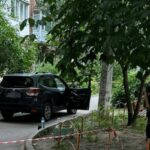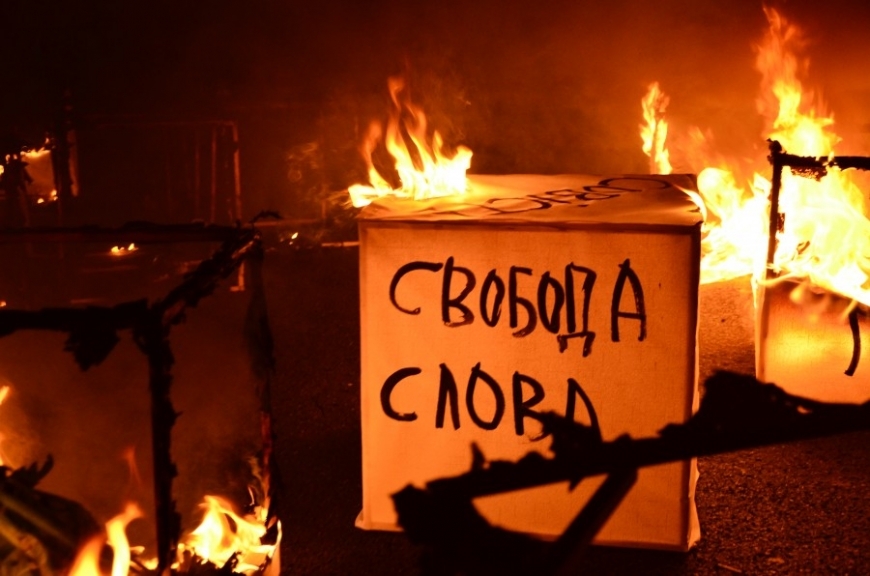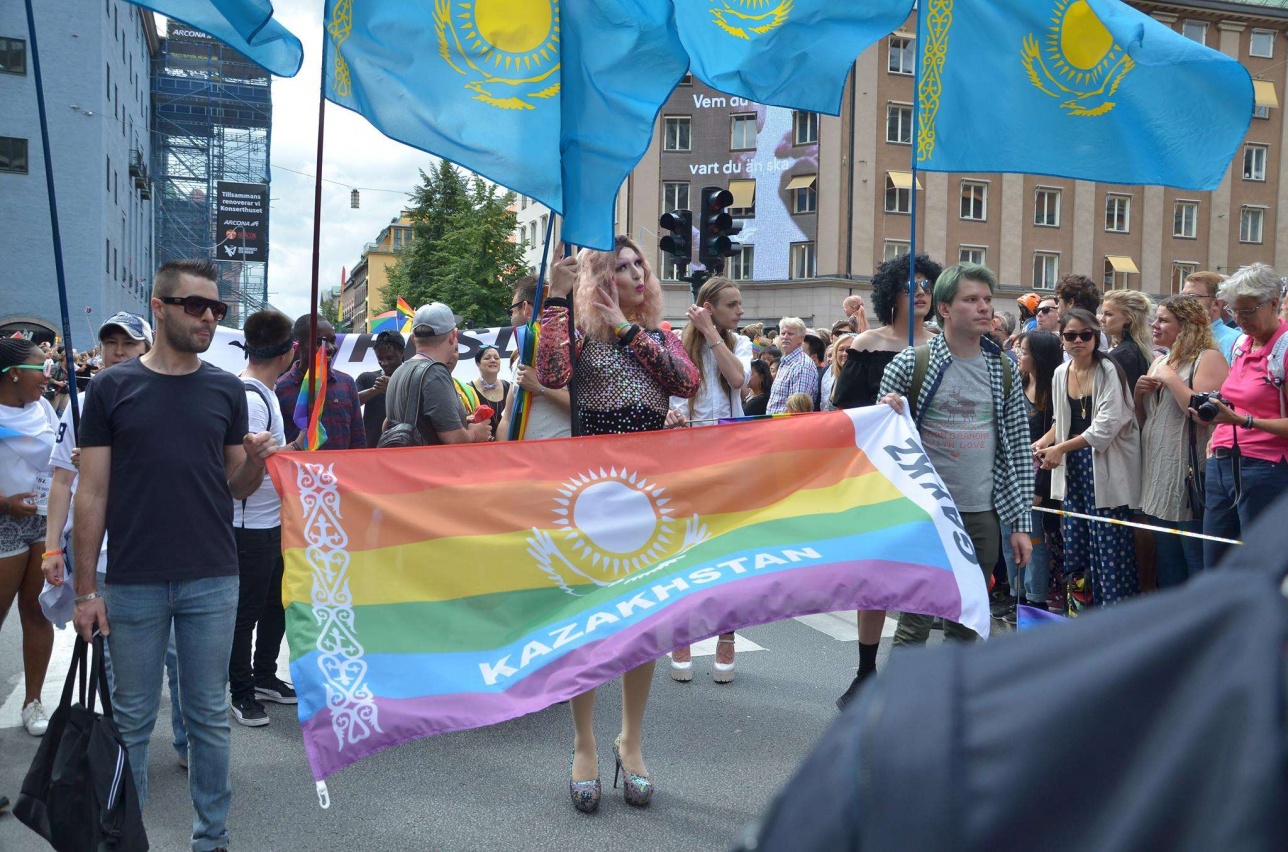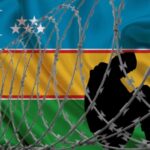Three
years ago today — Kazakhstan’s independence day — at least 15 striking oil
workers in the western Kazakh city of Zhanaozen were killed by state security
forces while they peacefully protested low wages and dangerous working
conditions. More than 100 others were left seriously injured, with many more
detained and tortured.
One of
the strike’s leaders described being suspended by her hair, sexually humiliated
and having plastic bags placed over her head. At least one other died in police
custody.
More
than a year and a half later, Amnesty International lambasted the Kazakh
government for the relative impunity still enjoyed by the perpetrators of the
Zhanaozen massacre and related crimes as well as for Kazakhstan’s use of
torture and other forms of prisoner abuse.
The
United States has also voiced repeated criticisms of widespread human rights
violations in the Central Asian nation — tempered, of course, with praise from
the State Department for Kazakh “progress in creating a favorable investment
climate.” A 2014 State Department fact sheet even claims that the dictatorship
of Nursultan Nazarbayev is developing as a “democratic … partner,” while
specifying that the bulk of U.S. aid to Kazakhstan (more than $14 million in
2013) goes to furthering “peace and security.”
Apparently,
this entails such activities as providing “training to Kazakhstan’s security
forces in peacekeeping operations” and developing “maintenance and sustainment
programs for U.S. equipment.” Reportedly on the scene at the Zhanaozen massacre
were American-supplied Humvees.
The Emirati way
It’s
easy to see why the Nazarbayev regime has managed to escape serious sanctions
despite its track record.
For
starters, Kazakhstan is currently a member of the United Nations Human Rights
Council. The country is strategically located and saturated with natural
resources, including oil, gas, coal and uranium. Its mineral wealth and
pro-corporate policies pretty much guarantee that when it comes to ostensibly
pro-democracy harassment by the U.S., Kazakhstan will never be in the same boat
as, say, Cuba.
Assisting
in the presentation of a whitewashed national image is the fact that Kazakhstan
has pursued a United Arab Emirates–esque model of development in its showcase
capital of Astana. The logic goes something like this: The more ostentatious
buildings and malls you have in a place, the less folks will notice its
oppressive foundations.
In the
UAE and similar locales, the tragic irony is that the buildings are constructed
by maltreated foreign laborers, often in conditions of indentured servitude.
In
Astana, it’s only fitting that one of the focal points of recent laborer
disenchantment is Abu Dhabi Plaza, an Emirati-funded skyscraper, where
construction workers went on strike earlier this year over low wages.
Set to
be the tallest building in Central Asia and located just down the way from the
monument that houses Nazarbayev’s handprint in gold, Abu Dhabi Plaza will be
one of the glitzy landmarks on display during Astana’s hosting of Expo 2017 —
another event that recalls the UAE method of detracting attention from unsavory
domestic realities through glamorous and capital-heavy international
spectacles.
If the
Western support that both governments boast is any indication, it’s a façade
that’s paying off.
The portrayal
of Astana’s four-year-old, unaccredited Nazarbayev University (NU) as a
pre-eminent Western-style academic and research institution encapsulates the
whole charade.
Successful development
In a
three-part exposé in 2012, historian Allen Ruff and journalist Steve Horn
showed NU to be the brainchild of U.S. imperial ambition, having come about “in
large part through the guidance of a small cadre of key actors with career-long
connections to the [World] Bank and the U.S. national security state.”
But if
NU is a Potemkin village, then it’s one inside the larger Potemkin village of
Astana.
It’s not
terribly difficult to speculate about the real purpose of a venture with such
parentage. NU, Ruff and Horn wrote, “serves an elite function in reproducing and
expanding the existing economic and political order”; once in full swing, the
system will churn out “a corps of technicians, administrators and bureaucrats
in service to an authoritarian state and its corporate partners at home and
abroad.”
Among
NU’s colorful cast of characters is Dennis de Tray, a member of the board of
trustees and an adviser to the university president. As Ruff and Horn point
out, de Tray studied at the University of Chicago under the tutelage of those
behind the unleashing of free-market reforms on Chile during the dictatorship
of Augusto Pinochet. De Tray later went on to serve the World Bank for more
than two decades and was country director for Indonesia at the time of the fall
of Suharto.
De
Tray’s musings on the occasion of Suharto’s death in 2008 are helpful in
assessing the sort of mentality that underpins NU. As de Tray saw it, Suharto’s
track record of mass murder was not overly concerning because “the bad that he
did — and some of it was horrific — should be balanced against the good, not
for the sake of Suharto but for the sake of development.” And not only that:
Suharto’s brutal and corrupt reign was “one of the great development success
stories of all time.”
The same
use of development lingo to excuse state repression applies to the situation in
Kazakhstan. Former British Prime Minister Tony Blair, who now consults for the
despotic Kazakh regime on how to attract foreign investment, took a similar
line when he advised Nazarbayev on the proper approach to the 2011 Zhanaozen
deaths: “Tragic though they were, [they] should not obscure the enormous
progress that Kazakhstan has made.”
Massacre
victims aside, the country’s homeless and others affected by growing inequality
would presumably fail to see the progress in Blair’s multimillion-dollar
contract.
Potemkin world
On a
recent trip to Kazakhstan, I visited the NU campus, the main atrium of which is
lined with palm trees — a somewhat incongruous interior decorating move, given
the often subzero temperatures outside.
The American
professor who agreed to show me around began his tour with the analysis that
“this place is a Potemkin village.” (Since he wanted at least one more year of
Potemkin village salary and benefits, he asked that I not use his name.)
Among
his critiques were the reportedly substandard caliber of the students — many of
whom he claimed were not proficient in English, the language of instruction —
as well as the preponderance of bureaucracy and corruption at the institution.
A former
colleague, he said, described NU as “very impressive to anyone who does not
understand what a university is.” In an ideal world, “university” would not be
the first label to come to mind for a school where oil companies help write the
curriculum.
But if
NU is a Potemkin village, then it’s one inside the larger Potemkin village of
Astana. And the matryoshka sequence doesn’t stop there; after all, the
neoliberal world’s attempts to conceal massive inequality makes it a Potemkin
village in its own right.
SOURCE:
Al Jazeera
http://america.aljazeera.com/opinions/2014/12/kazakhstan-nazarbayevhumanrights.html
















